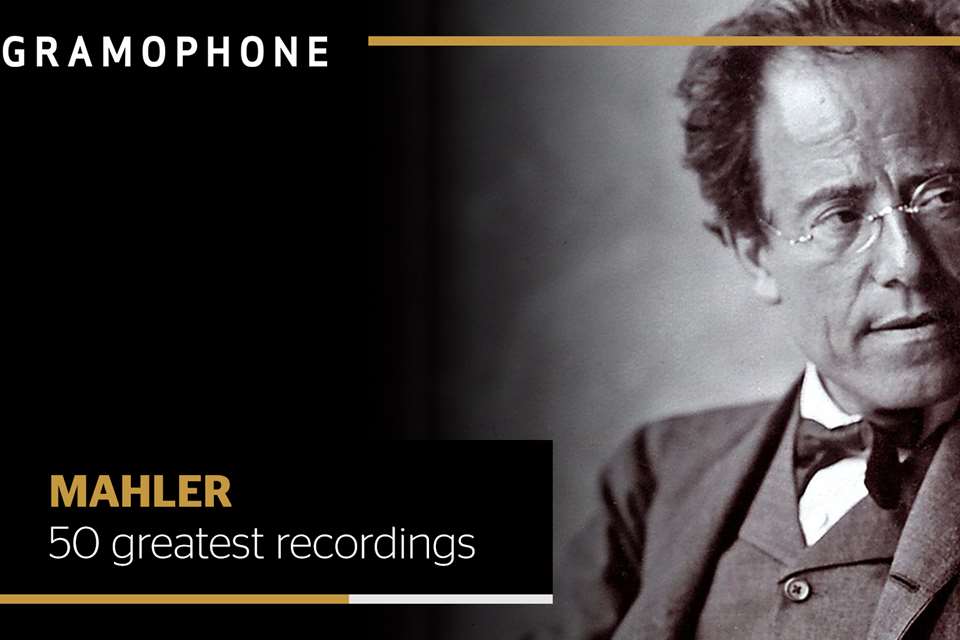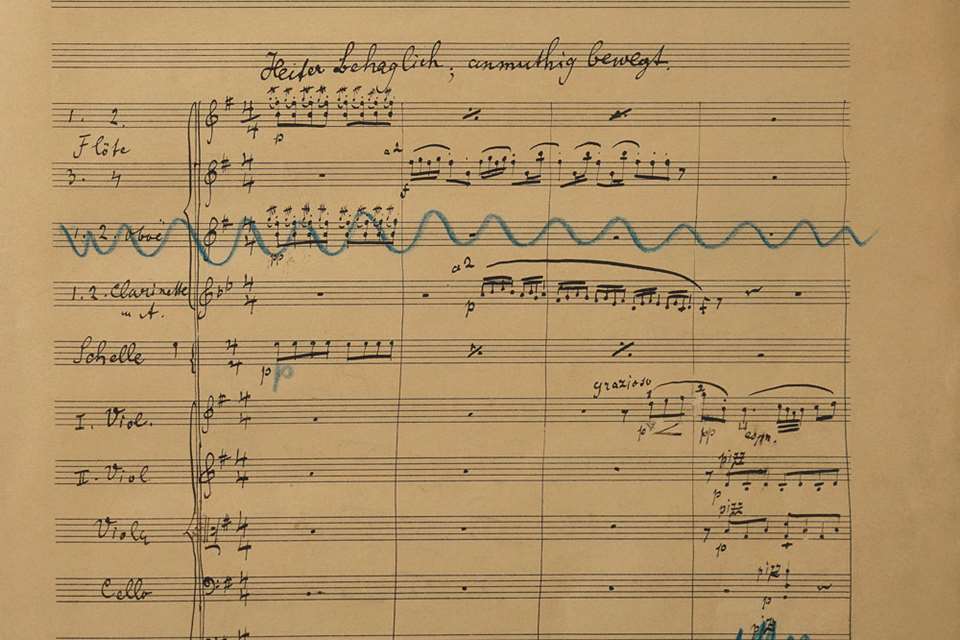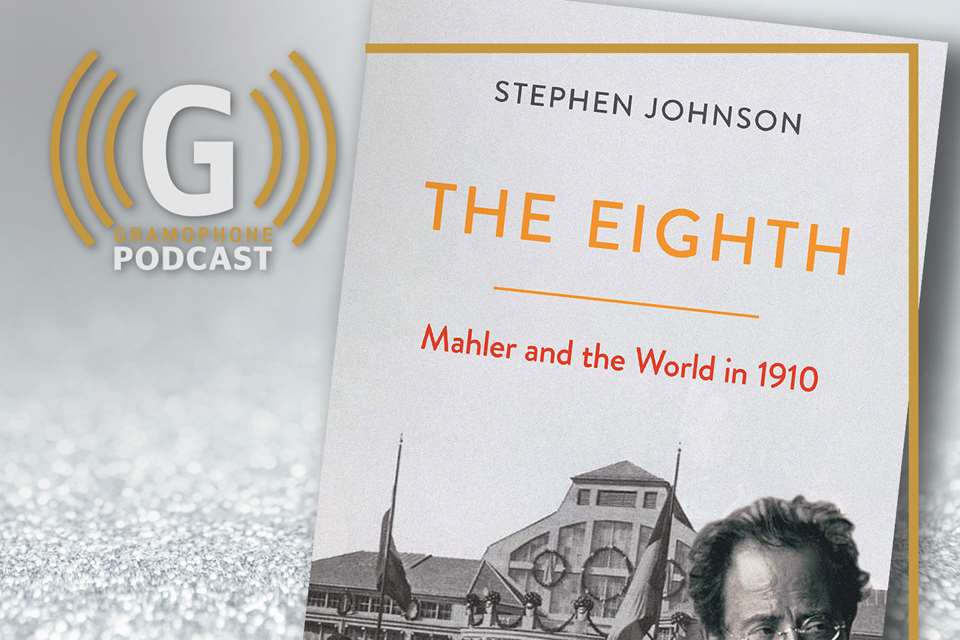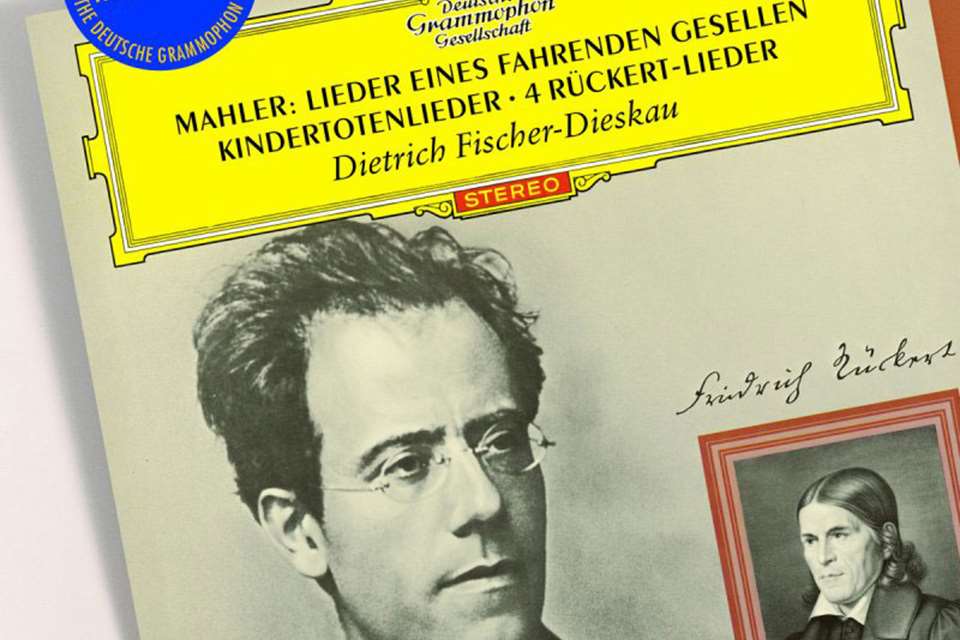Top 10 Gustav Mahler symphony recordings
Thursday, February 3, 2022
Gustav Mahler said, 'My symphonies represent the contents of my entire life.' Here are just a few of the finest recordings available...
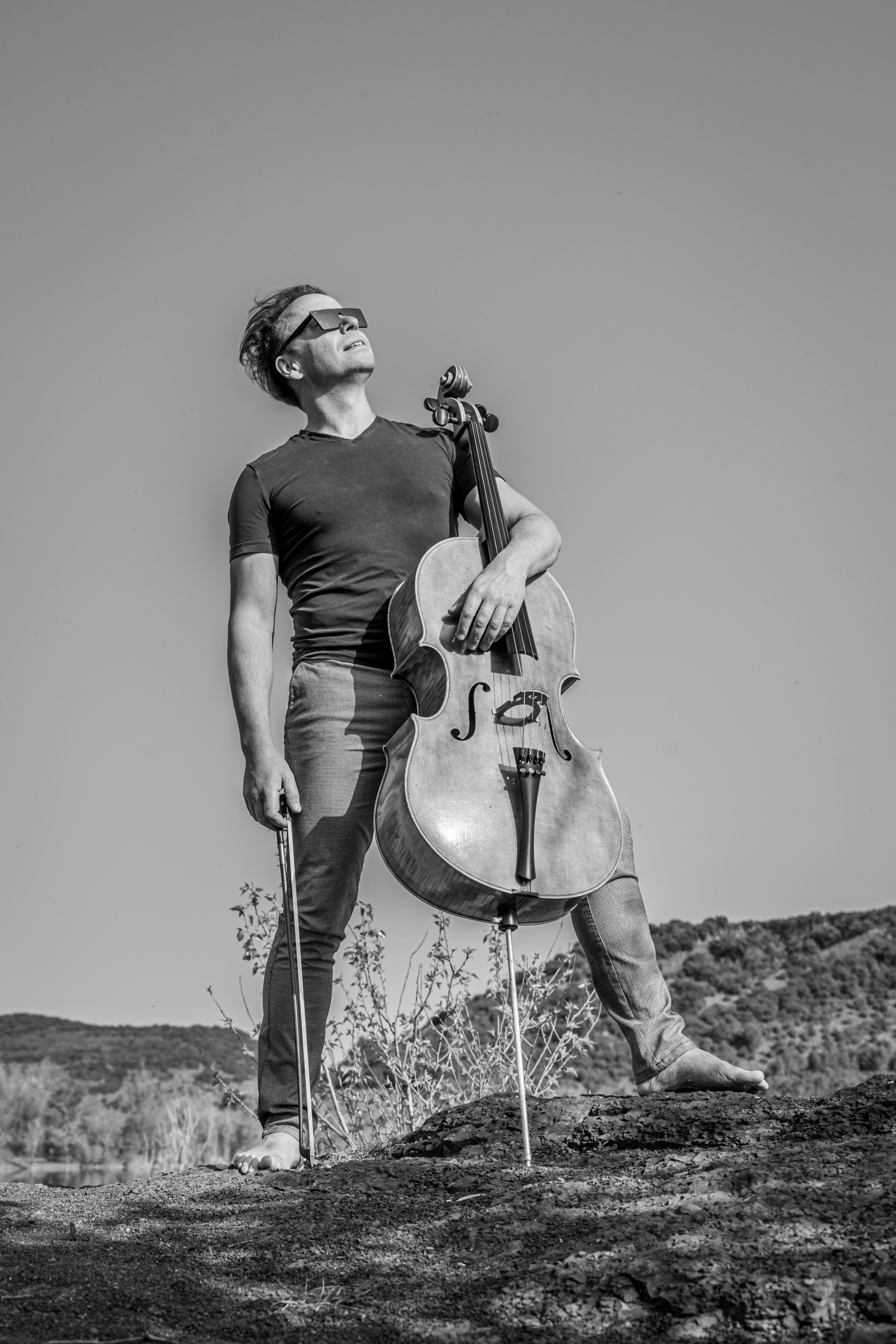
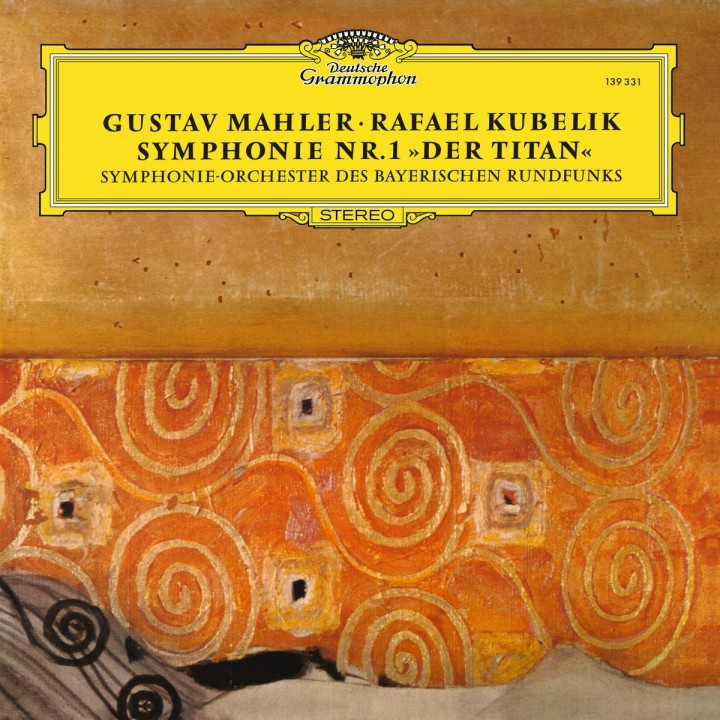
Symphony No 1
Bavarian Radio Symphony Orchestra / Rafael Kubelík
(DG)
This distinguished coupling has already been available at bargain price so its appearance in The Originals livery comes as something of a surprise. That said, the packaging is first-rate and the notes interesting and thoughtful. On the first appearance of the symphony in 1968, Deryck Cooke observed that Rafael Kubelik was “essentially a poetic conductor and he gets more poetry out of this symphony than any of the other conductors who have recorded it”. Bruno Walter was, he felt, Kubelik’s only rival in this regard and he was much taken with the “natural delicacy and purity” of the interpretation. Unlike Walter, Kubelik takes the repeat of the first movement’s short exposition. Strange, then, that he should ignore the single repeat sign in the Landler when he seems so at ease with the music. Notwithstanding a fondness for generally brisk tempos in Mahler, Kubelik is never afraid of rubato here, above all in his very personally inflected account of the slow movement. This remains a delight. The finale now seems sonically a little thin, with the trumpets made to sound rather hard-pressed and the final climax failing to open out as it can in more modern recordings. The orchestral contribution is very good even if absolute precision isn’t guaranteed. In the first movement we do not get genuinely quiet playing from the horns at 9'30'' whereupon the active part of the development is rather untidily thrust upon us.
Dietrich Fischer-Dieskau’s second recording of the Lieder eines fahrenden Gesellen has worn rather less well, the spontaneous ardour of his earlier performance (with Furtwangler and the Philharmonia – EMI, 6/87) here tending to stiffen into melodrama and mannerism. There is of course much beautiful (if calculated) singing and he is most attentively accompanied, but the third song, “Ich hab’ ein gluhend Messer”, is implausibly overwrought, bordering on self-parody. By contrast, Kubelik’s unpretentious, Bohemian approach to the symphony remains perfectly valid. A corrective to the grander visions of those who conduct the music with the benefit of hindsight and the advantages of digital technology? Perhaps. David Gutman (February 1997)
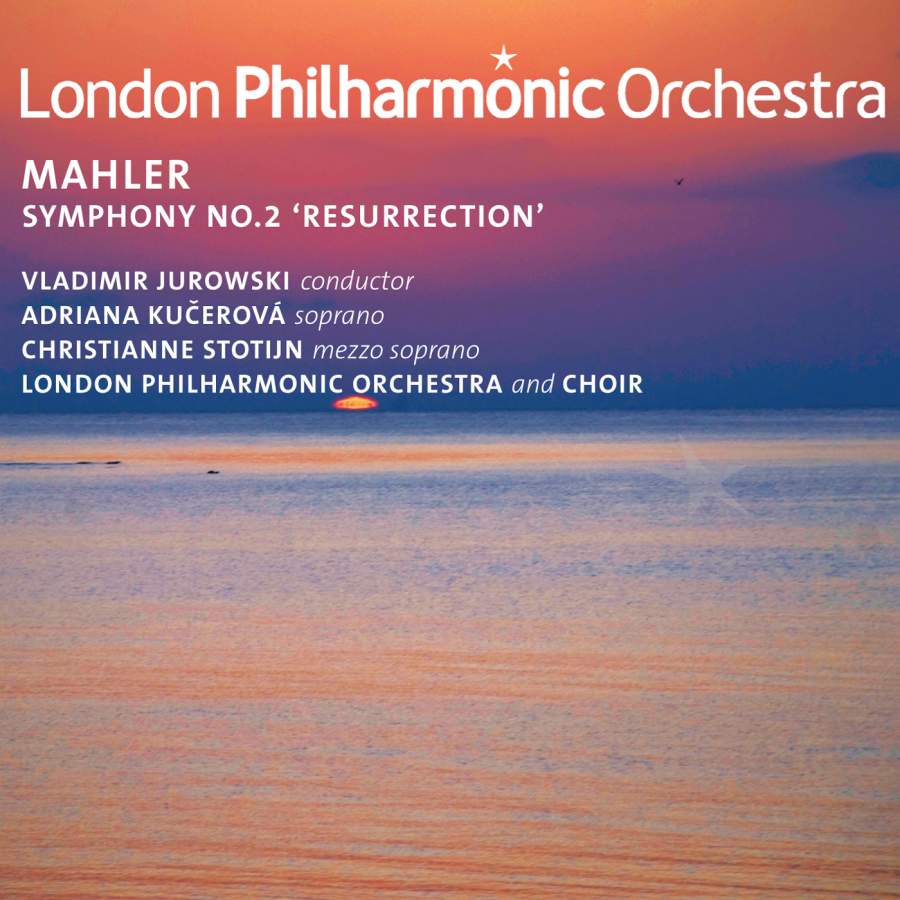
Symphony No 2
Adriana Kucerova (soprano), Christianne Stotijn (mezzo-soprano); London Philharmonic Orchestra, London Philharmonic Choir / Vladimir Jurowski
A performance of revelations, big and small, and easily the most illuminating to have appeared on disc in a very long time. Jurowski wipes the floor with the recent Rattle and Jansons accounts and is probably now the prime recommendation, the “library” choice, that has for so long eluded us. And I include the excellent Ivan Fischer account on Channel Classics in that assesment. I was present at this live performance, what was a momentous evening at the Royal Festival Hall in September 2009 but wondered how it might translate to disc in the cool light of day. So often musical occasions writ large in one’s memory achieve optimum impact only in the moment of performance and pale on reproduction and repetition. Not so, this Resurrection.
The really big factor here is Jurowski’s command of Mahler’s very particular and very dramatic way with rubato and the shock of newness that comes from those explicit extremes. The urgency of the opening Allegro maestoso (the emphasis, unlike Rattle, on the allegro) is strikingly underlined with the premature arrival of the lyric second subject where Jurowski’s emphasis on the agitated bass-line has an edge-of-seat disquiet. When the music does settle – the balmy second subject now shyly reappearing – the effect is doubly magical. Weight in Jurowski’s reading does not necessarily mean sheer heft but rather the breadth of those big expansive ritenutos and tenutos. Rarely have I heard the wild neurotic contrasts in this music more scrupulously and uncompromisingly realised: emphatic marcatos, wild accelerandos so sudden and unexpected that you reach for the score for confirmation and then wonder why so many conductors downplay or simply ignore them.
So many moments in this first movement sound renewed: the grisly tread of string basses marking the approach to the climax of the development; the electrifying col legno passage, like the beating wings of the angel of death, so deliberate as to accentuate the sudden rush to the precipice (note: no ritardando) and the terrifying reiteration of that ugly stack of notes marking the point of no return. Then that beautiful passage in portamento-festooned strings demonstrating just how far the LPO have come under Jurowski’s directorship.
A strange distracted elegance marks the second movement, with the restless string ostinato and especially the entry of the string basses serving to remind us that this is no mere diversion but rather an ironic variant, the flip-side, if you like, of the first movement. The pizzicato return has a sinister charm, a deliberation, which suggests a different kind of march – the elfin variety. And that ironic rusticity proceeds in the vividly projected third movement with its quirky country dance in fiddle and flute, and delicious Trio in close-harmony trumpets. The climaxes again romp forwards with precipitous abandon while the soft, still, maternal voice of Christianne Stotijn seems to emerge supernaturally from the final tam-tam stroke.
The finale is tremendous and highly theatrical, with spatial effects beautifully managed in a hall not noted for its accommodation of acoustical special effects. The anticipation of the silence before the brass chorale deliver the Dies irae is heart-stopping, as is the hair-raising climax setting the offstage band on a collision course with the orchestra. You might quibble that the soprano soloist, Adriana Kucerová, is set too close for that magical separation from the chorus but the whole final paragraph is thrilling, with Mahler’s returning Resurrection hymn phrased with urgency and uplift. You may think you know how Mahler’s Second Symphony goes. Think again. Edward Seckerson (August 2011)

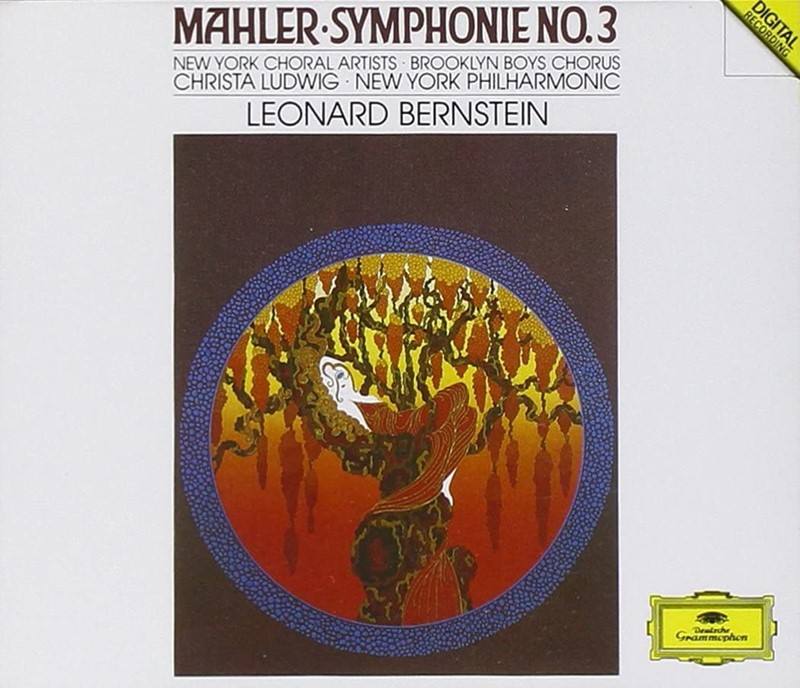
Symphony No 3
Lipton; Choir of the Transfiguration; NYPO / Leonard Bernstein
''This is the first time I have ever heard Bernstein conduct Mahler, and I certainly hope that it will not be the last.'' So wrote the late Deryck Cooke in these pages in December 1962 of this very symphony. And the rest, as they say, is history. For me too, that particular recording made an immeasurable and lasting impression. To this day, I have regarded Bernstein's handling of the last movement alone—that majestic D major hymn to life and love—as the model against which all others must be measured. The courageous breadth of line (only Abbado on DG has since taken a comparable overview), the sustained intensity, the nobility, the inwardness—this is quite simply one of the finest pieces of Mahler conducting in my recollection. So here we are, nearly 30 years on, with Bernstein no less, if anything more, in awe of the movement, communicating still an overwhelming sense of its transcendental reverence, and coming, what's more, to within five seconds of his previous timing over a duration of some 25 minutes. That in itself is remarkable. Remarkable, too, is the orchestra that makes it all possible: the New York Philharmonic. They have always surpassed themselves in this movement, this symphony (after a decade-plus at their helm, Bernstein chose it for his final concert as Music Director—so it is significant).
They do so again here. If I might single out the 'final paragraph' from fig. 25 (CD2, track 9) where the solo flute seems to levitate above the orchestra and three trumpets and one trombone (in the most exquisitely blended sound) softly voice once more the noble hymn, right through to the big release at 5'19'' of track 9 with its ecstatic brass harmonies (as fine an example as I know of consonance through dissonance). This is marvellous.
Of course, one has to contend here with the somewhat thankless acoustic of Avery Fisher Hall, and DG have once more attempted to divert attention from its lifelessness by taking us in close to the action. I do miss the spacial perspectives of the old CBS sound, though arguably the reverse was true in that case and one craved a degree or two more impact from the flabbergasting sonorities of the first movement. One certainly gets that here: the dark grainy colour of low horns and contra-bassoon just after the opening summons, the dry rattle of bass drum triplets, the hollow oscillation of the woodwinds, the dramatic upsurges of cellos and basses as nature stirs, twitches from slumber. Bernstein injects great urgency into these seemingly involuntary impulses. Where Mahler marks bewegt (with mobility), one really feels movement in the phrasing. No one profiles the advancing march quite as zealously as Bernstein (piccolos, glockenspiel, trilling horns et al): the chaotic climax of the development, the passage Mahler himself dubbed ''the mob'', is given the full 'fife and drum' treatment, while the euphoric coda is precisely that, with Bernstein making even more now of those panoramic chords as summer sunshine floods the scene with light. A word, too, for the trombone soloist whose long solos progress so eloquently from primitive severity to melancholic regret.
As for the inner movements, Bernstein is possibly a little more relaxed and spontaneous of manner in his earlier account of the charming 'flower' minuet. One is marginally more conscious now of the rubato—the little nudges and hesitations—to say nothing of the puckish contrasts of the trios. In the 'animal' frolics of the third movement scherzo, there is little to choose between the two readings. Both are boldly characterized, Bernstein and his uninhibited New Yorkers revelling in the rough and ready polka rhythms and raucous bird calls. The magical post-horn obbligato of Mahler's second trio is as far-off and misty-eyed as it is possible to be without actually blurring clarity; perfect. My only serious disappointment concerns the Nietzsch ''Midnight Song'' setting—nothing, I hasten to add, to do with Christa Ludwig, who is fine, but a question of dynamics. The recording (surely not Bernstein?) never allows us a true pianissimo, leave alone the pppp marked at the close. The profound darkness, the inky misterioso of the opening page is all but lost here the murmuring cellos and basses (much too loud), and then muted horns, do not steal, as it were, into our consciousness.
But then, other contenders have their draw-backs too and none quite matches Bernstein's unique aura, not least in that wonderful last movement. I very much like the Tennstedt (EMI) Inbal (Denon), and—most of all—Abbado (DG) recordings. But even Abbado, for all his insight and sensitivity (his is unquestionably the most sheerly beautiful of current options), must yield to Bernstein in the matter of Mahler's elemental and uncompromising sound world. Tennstedt, too, scores heavily in this respect. If pressed, I might confess to having a slight preference for Bernstein's earlier CBS account (now on CD coupling the Ruckert and Jungendzeit Lieder), but tonally-speaking, the newcomer is not surprisingly the more vivid and opulent of the two. Either way, Bernstein's Mahler Third is special — and that cannot be overstressed. Edward Seckerson (June 1989)

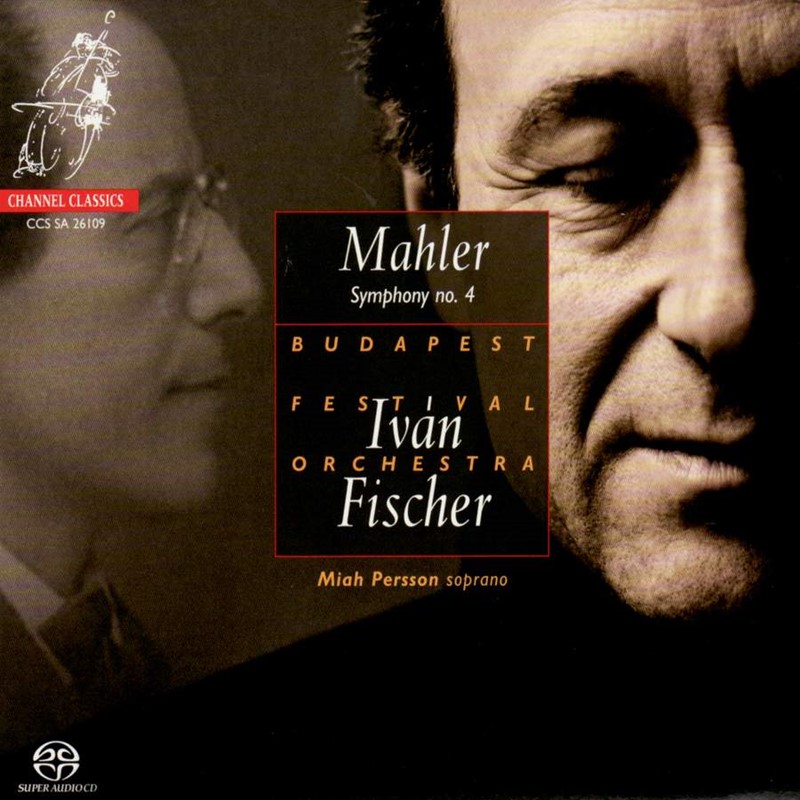
Symphony No 4
Persson; Budapest Festival Orchestra / Iván Fischer
What no one will deny is the amazing unanimity and precision of the playing here and the superlative quality of the sound engineering. But how to read a work that can feel brittle as well as heart-warming and graceful? Despite Iván Fischer’s eminently sane and central pacing overall, he courts controversy with inconsistencies of tone between (and individualised inflexions within) the four movements.
Some maestros choose between neo-classical modernity and old-world Gemütlichkeit. Fischer gives us both and more: he gives us instability. Rather than taking his cue from the opening bars in which the jingling sleigh bells might be construed to lose their way, Fischer mixes them down, introducing his own eccentric nuance a fraction later. He permits an oasis of exquisite repose just before the movement’s final flourish yet much of the rest is unsettling. While details unearthed are revelatory – often linear, maybe functional, certainly more than merely illustrative – the quest can seem obsessive, at odds with the sense of ease indicated by the composer. Make no mistake however, the playing has character and conviction, the divided violins enhancing transparency albeit at some expense of weight and blend. Less self-regarding or at least less wilful since the idiosyncrasies are intrinsic, the Scherzo goes wonderfully well, with solo violin and clarinets in particular excelling themselves. The slow movement is just a little pale, as if Fischer were deliberately avoiding the calculated sublimity and cushioned string tone associated with big-band performances of late Beethoven. The gates of Heaven are flung open with a great blare, possibly a bit much for home listening but replicating the immediacy of the concert hall. In the finale, Fischer achieves novelty chiefly through understatement, mindful of the need to avoid coyness at all costs. Miah Persson is ideally cast and as she invokes Saint Martha at 3'56" it’s as if we’re transported to a small village church, the organ made tangible in the exquisite treatment of the accompanying instrumental texture.
This is just one of countless imaginative touches on an exceptional hybrid SACD. That said, I’m still in two minds about it. Is Mahler’s emotive force blunted by Fischer’s careful manicure? David Gutman (April 2009)
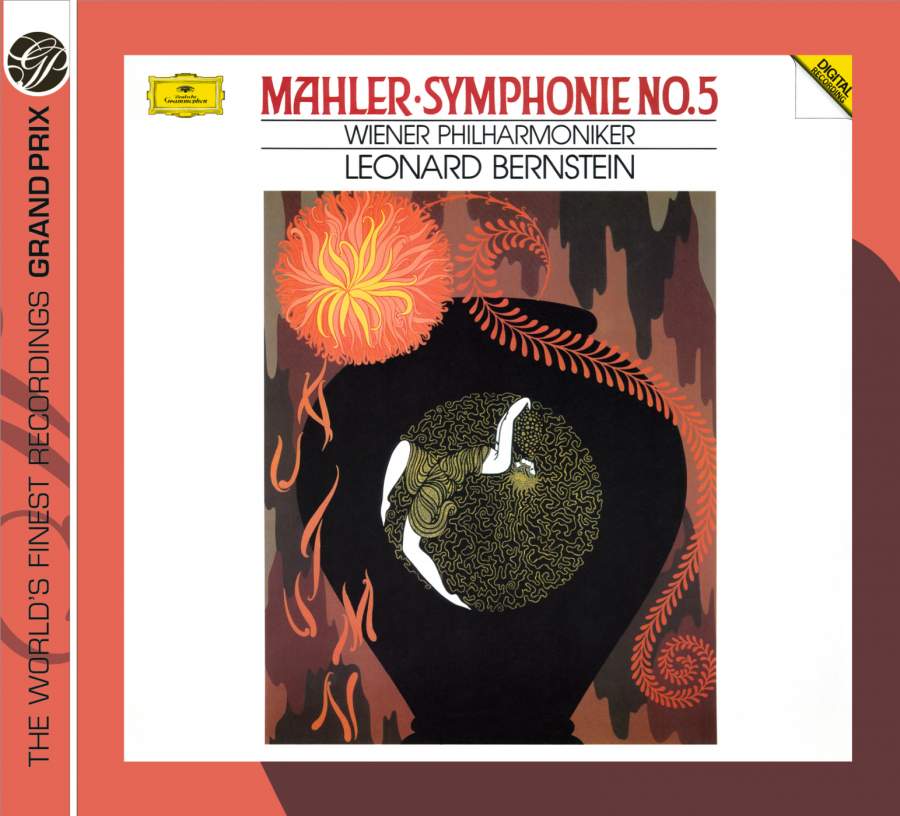
Symphony No 5
Vienna Philharmonic Orchestra / Leonard Bernstein
Bernstein's tempo for the uneral march in the first movement of Mahler's Fifth Symphony has become slower in the 23 years that separate his New York CBS recording from this new one, made during a performance in Frankfurt a year ago. I think the faster tempo is nearer to Mahler's intention, but I much prefer the later interpretation as a whole. For one thing, the VPO play it much better than the NYPO of 1964, who were having a relatively bad day when the recording was made. The strings only passage at fig. 15 in the first movement, for example, is exquisitely played, so is the long horn solo in the Scherzo. And there is one marvellously exciting moment—the right gleam of trumpet tone, the Hohe-punkt, at one bar before fig. 29 in the second movement.
Best of all is Bernstein himself, here at his exciting best, giving daemonic edge to the music where it is appropriate and building the symphony inexorably to its final triumph. Thanks to a very clear and well-balanced recording, every subtlety of scoring, especially some of the lower strings' counterpoint, comes through as the conductor intended. As in the case of Sinopoli's underrated recording of this symphony (also DG), one is made aware of the daring novelty of much of the orchestration, of how advanced it must have sounded in the early years of this century. But whereas with Sinopoli this emphasis was achieved at the expense of some expressive warmth, that is far from the case with Bernstein. We get the structure, the sound and the emotion.
The Adagietto is not dragged out, and the scrupulous attention to Mahler's dynamics allows the silken sound of the Vienna strings to be heard to captivating advantage, with the harp well recorded too. It seems to me that Bernstein is strongest in Mahler when the work itself is one of the more optimistic symphonies with less temptation for him to add a few degrees more of angst. His Seventh and Fifth are great interpretations whereas I would be reluctant to include his Ninth among the really memorable accounts. Michael Kennedy (August 1988)

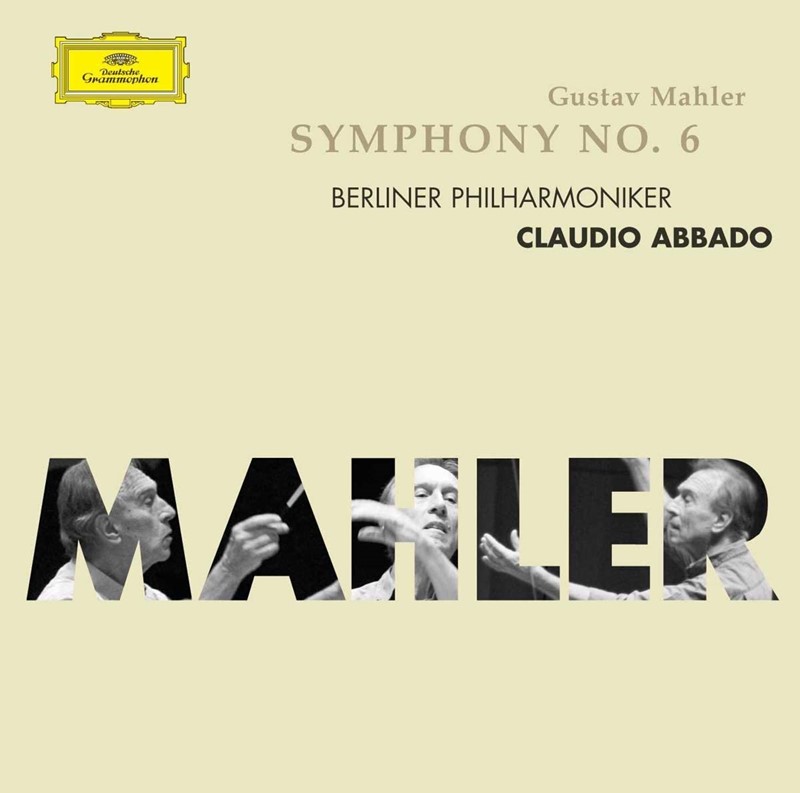
Symphony No 6
Berlin Philharmonic Orchestra / Claudio Abbado
Whatever the revolution in playing standards since January 1966, when Barbirolli conducted Mahler’s Sixth in Berlin, I can’t remember hearing a tauter, more refined performance than this, nor one that dispenses so completely with the heavy drapes of old-style Mahler interpretation. The work concluded Abbado’s first Philharmonie programme since passing the reins to Sir Simon Rattle, an occasion bound to provoke standing ovations and a little myth-making, too. Only if one discounts Celibidache’s interregnum could this be considered the first time in the orchestra’s history that a former chief had returned to direct. Now, with the music repositioned on the sunny side of the Alps and seen through the prism of the Second Viennese School, an effortless, sometimes breathtaking transparency prevails.
In the first movement, Abbado’s sparing use of rubato precludes the full (de-)flowering of the ‘Alma theme’ in the Bernstein manner, and there are some curiously stiff moments in the Andante moderato, here an iridescent intermezzo quite unlike Karajan’s Brucknerian slow movement. This may not be a Sixth for all seasons and all moods – the Berliners rarely play with the full weight of sonority long thought uniquely theirs – yet I soon found reservations falling away. For all its fine detailing, Abbado’s finale lacks nothing in intensity, with a devastating corporate thrust that may or may not have you ruing DG’s decision to include an applause track.
A more serious stumbling block is the maestro’s decision to place the Scherzo third, following the lead of Del Mar, Barbirolli, Rattle and others. Purchasers of a a single disc CD version available in some parts of the world can re-programme, of course, but technical constraints for the hybrid SACD disc, available in the UK, have led DG to opt for a pair of discs containing two movements apiece. It must, however, be pointed out that the extra cost is borne by the manufacturer, not the consumer. And, apart from two curious pockets of resonance in the finale (on either side of the 10-minute mark), Christopher Alder’s team achieves a much more realistic balance than you’ll find in the conductor’s previous live Mahler issues. If a little cavernous, the effect is blessedly consistent, allowing us to appreciate that Abbado’s sweetly attenuated string sound is just as beautiful as Karajan’s more saturated sonority, a testament to the chamber-like imperatives of his latter-day music-making, not to mention the advantage of adequate rehearsal time!
I should add that the finale’s hammer-blows are clearer and cleaner than I have ever heard them. Abbado does not include the third of these before the final coda but the hard, dry brutality of his clinching fortissimo is guaranteed to take you by surprise. Donald Mitchell provides excellent booklet-notes to cap a remarkable release that I would expect to find on next year’s Awards shortlist. David Gutman (September 2005)

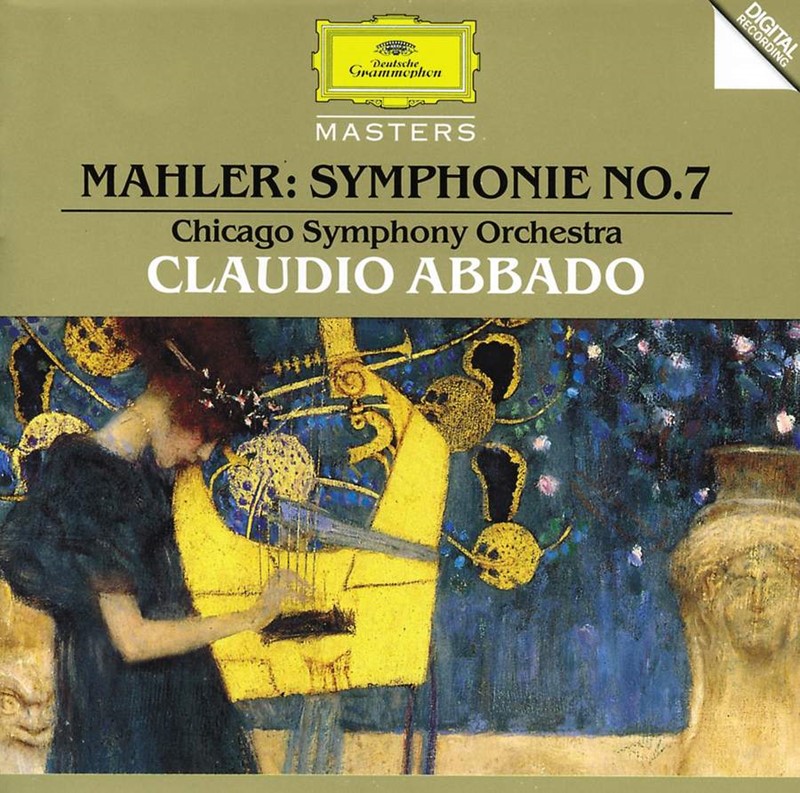
Symphony No 7
Chicago Symphony Orchestra / Claudio Abbado
Abbado's view of Mahler's Seventh Symphony, like Haitink's on Philips, is judicious and clear-sighted. The playing of the Chicago Symphony, like that of the Concertgebouw, is exceptionally refined, free of all inadvertent exaggeration and histrionic display. Both conductors, in collaboration with their engineers, favour natural sound perspectives, a mid-stalls view. Aided by a clean acoustic and poised, clearly-projected solo playing in the orchestra, the most intimate details of Mahler's huge score seem effortlessly to carry.
The difficult outer movements are neither urged forward in the Kubelik style (at mid-price on DG) nor broadened in the highly-tendentious manner of Klemperer on CfP. As ever, Abbado is the unpretentious, keen-eared elucidator. So conscientious is he that there are moments in the first movement when it's possible to think the score over-annotated by the composer. Yet it is a measure of Abbado's general skilfulness that the somewhat episodic structure is held in a reasonably clean focus. The central meditation is unusually fine in this performance, notable for the concentration and fine-grained sensibility of the Chicago playing.
Nachtmusik II is also played without exaggeration, Abbado allowing the orchestra to register Mahler's Andante amoroso directly, eloquently. In Nachtmusik I he is strikingly relaxed, sehr gemachlich; yet he conducts as quick a performance of the eerie central Scherzo as I recall hearing on record. (I suspect that Scherchen's distinguished old Vienna State Opera Orchestra recording, on Nixa mono WLP6211, 7/54—nla, was as quick, but I don't have it to hand for comparison.) I must say I like the movement played with a modicum of drive. Unfortunately, Mahler's instructions are ambiguous and could be taken equally as chapter and verse for Haitink's most recent, and to my ears rather flaccid, performance. This is a movement in which Kubelik on DG Privilege is superb; as, indeed, he is throughout the symphony.
You may conclude from all this that Abbado's performance is almost too respectable. A symphony as bizarre as this occasionally is (Deryck Cooke once dubbed it Mahler's ''mad, mad, mad, mad symphony'') could be said to require a touch of hype, Bernstein-style (CBS SBRG72427/8, 6/66—nla). Abbado's clear appraisal of the score should, none the less, win friends for the work, not least because of the Chicago orchestra's distinguished and distinctive realization of Mahler's difficult and, at times, technically innovative writing. Richard Osborne (March 1985)

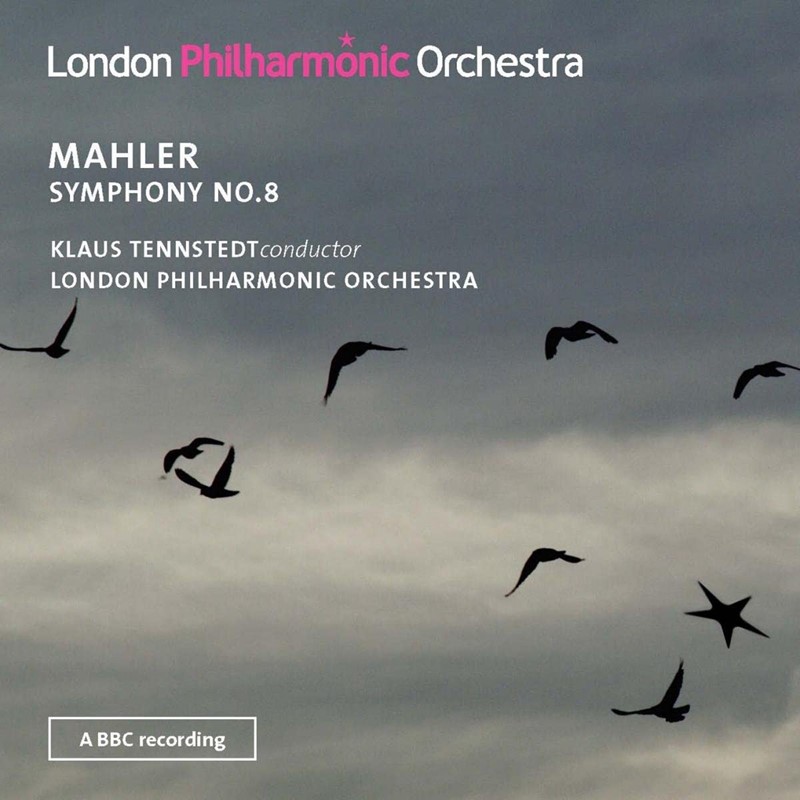
Symphony No 8
London Philharmonic Choir & Orchestra / Klaus Tennstedt
The Royal Festival Hall was never a natural venue for Mahler’s Eighth Symphony, and I remember well how Klaus Tennstedt’s choirs spilled from the choir stalls into the adjoining side stalls and how boxes were deployed to accommodate the offstage brass and, at the highest point, Susan Bullock’s Mater Gloriosa. But what we lost in breadth and magnitude (the acoustic was much drier then) we gained in an all-enveloping and electrifying immediacy.
And so, with the biggest upbeat in music (and from days when the Festival Hall organ was complete!), Mahler’s hymnic invocation swept all before it. It was almost as if Tennstedt was striving to compensate for the constrictive sound of the hall by building the spatial perspective into his reading. Come the mighty development, he takes the text “Accende lumen sensibus” (“Inflame our senses with light”) at absolutely face value. As the fervour mounts to fever pitch – his sopranos Julia Varady and Jane Eaglen hurling out top Cs like they could be the last they ever sing – one almost doesn’t notice that the tempo is getting broader and broader. Tennstedt is one of the few conductors in my experience to almost convince me that impetus has nothing to do with speed. And, of course, though there is no ritardando marked in the momentous bars leading to the point of recapitulation, Tennstedt (who was nothing if not a traditionalist) is having none of it – the heavens duly open but in the certain knowledge that they will do so again, only bigger, with the Chorus Mysticus.
Part 2 begins with a poco adagio which, thanks to the kind of high-intensity string-playing only Tennstedt could elicit from the LPO, tugs at the emotional fabric of the music as few dared to do. To some it will feel overwrought, to most (or at least to staunch Mahlerians) it will be another instance of Tennstedt’s total identification with this music. His painting of the Faust scene is characteristically craggy, with the arrival of the Doctor’s heavenly escort prompting angelic high jinks far rougher and readier in tone than in some accounts. So, too, the casting of the male soloists, with Kenneth Riegel’s Doctor Marianus eschewing head voice for an often pained rendition of the cruelly high tessitura.
But as the Mater Gloriosa duly floats into view (the lovely Susan Bullock) and the force of love becomes unstoppable, Tennstedt is overwhelming. Try topping the orchestral peroration, offstage trumpets stretching the “Veni, Creator Spiritus” motif from the interval of a fifth beyond the octave to a heaven-storming ninth. Edward Seckerson (June 2011)

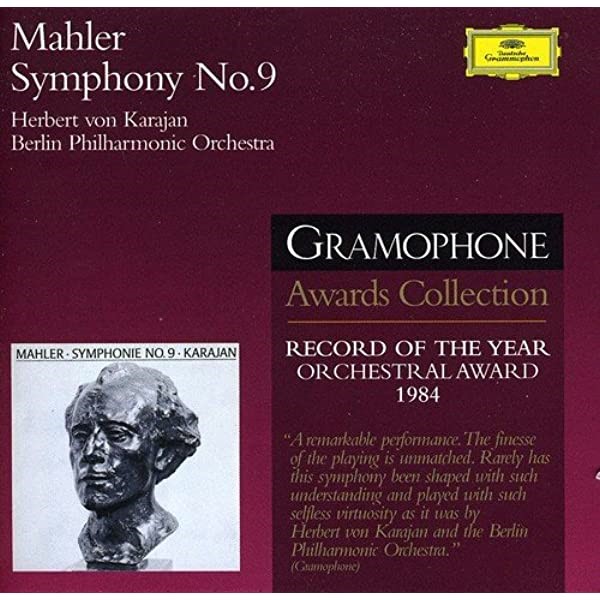
Symphony No 9
Berlin Philharmonic Orchestra / Herbert von Karajan
In 1980, Karajan and the BPO made a memorable LP recording of the Ninth Symphony in excellent analogue sound (DG). As a performance it went further than any extant recording in distilling the music's essentially impersonal, other-worldly character whilst at the same time suggesting what EG, writing in the Guardian, aptly called ''the emotional thrust of a live performance''. One or two critics here and in the United States thought Karajan held the work at arm's length; but the reading won plaudits from Mahlerians of many persuasions, for as Schoenberg observed, and as Karajan and his players so movingly reveal, ''this symphony is no longer couched in the personal tone. It consists, so to speak, of objective, almost passionless statements of a beauty which becomes perceptible only to one who can dispense with animal warmth and feels at home in spiritual coolness'' (Style and Idea, Faber, 1975).
And yet the reading continued to develop. It already had great precision, beauty and tonal clarity—all hall-marks, Schoenberg tells us, of the late Mahler style—but there was clearly more to say. Like Mahler, Karajan has been accused by some colleagues of achieving results through a super-abundance of rehearsals. But, says Schoenberg, the great conductor knows in the ninth rehearsal that there is more to say in the tenth, whereas most conductors have nothing to say after the third: ''the productive man conceives within himself a complete image of what he wishes to produce''.
All of which is germane to the present performance. In 1982, the BPO's centenary year, Mahler's Ninth was played in an unforgettable series of concerts in Salzburg, Berlin and New York. Two things were evident in the momentous first performance in Salzburg in April 1982. First, Karajan was bringing an added toughness and truculence to the opening measures of the second movement, strengthening still further an already masterly unfolding of Mahler's powerful essay in the metamorphosis of the dance. Secondly, the LP recording was no studio fabrication. Schwalbe and his men really did play the work from first note to last with a degree of technical address which, by normal standards of human perfectibility, was well-nigh incredible. As the 1980 LP recording was not in digital sound and as the reading had itself evolved, Karajan seems to have needed little persuasion to allow the taping of the final, Berlin performance in 1982, I say performance advisedly, for what we have here is a single performance, though the dress rehearsal was taped as a precaution and used (I would suspect in the concluding Adagissimo) where audience of platform noise was likely to be damagingly intrusive.
The result is again exceptional. Certainly this is the finest live performance of a Mahler symphony to have appeared on any kind of record since Mengelberg's 1939 account of the Fourth Symphony.
Interpretatively and orchestrally, it is superior to the historic live 1938 VPO set of the Ninth under Bruno Walter (World Records SH193-4, 9/74—nla). Walter never realized the concluding Adagio (on record, at least) as steadily, as lucidly, as eloquently, as dispassionately as Karajan; and the old VPO is no match for our own latter-day BPO.
Only in one respect does the old Walter recording seem preferable and that is in some degree of distance that exists between the microphones and the orchestra. Make no mistake, the digital sound on this live Berlin recording is wonderfully clear and thrillingly actual; but I am not always at ease with the conductor's-ear-view of the proceedings, though of course long stretches of the score—the ruminations and chilly declensions of the first movement, the rapt Trio of the third (fabulous violin- and trumpet-playing here) and paragraph after paragraph of the fourth—derive immense benefit from the absolute clarity and absolute quiet of the CD.
Technically, there are similar swings and roundabouts with Solti's studio recording on Decca, as EG pointed out last November. But good as the Solti is, it isn't in the Karajan class as an interpretation. Which is no disgrace, for Karajan's reading and the Berliners' playing of it—the Adagio in especial but much else besides in this latest performance—is one of the seven wonders of the modern musical world. Richard Osborne (July 1984)
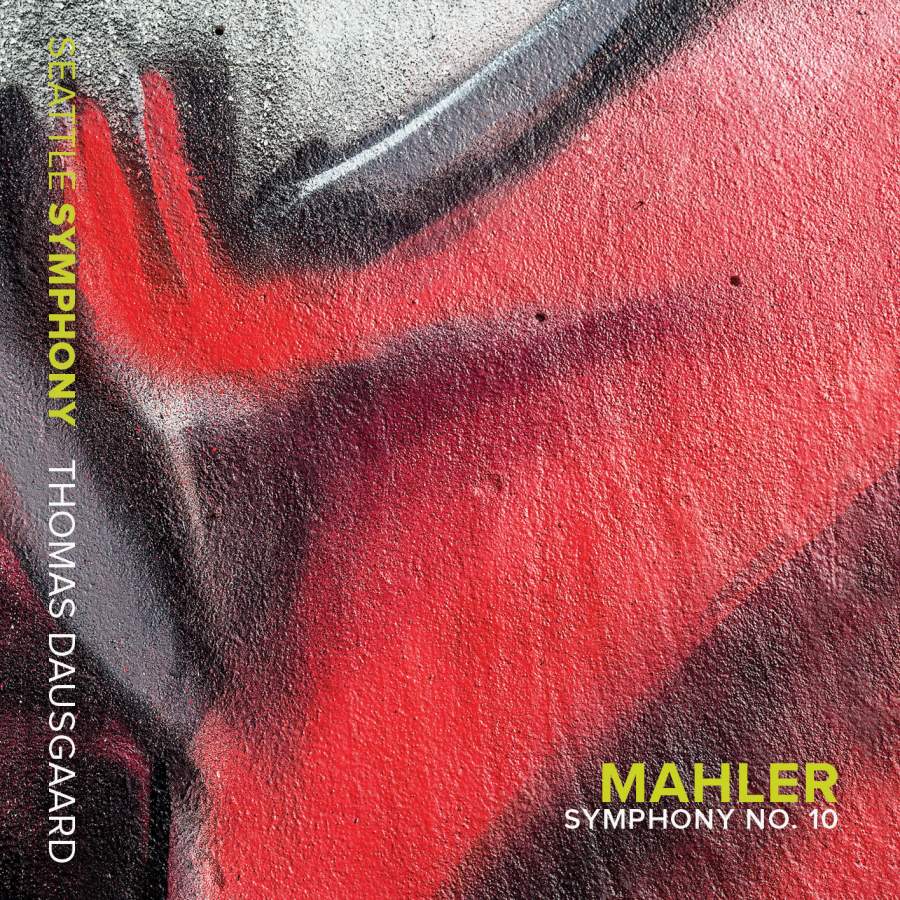
Symphony No 10
Seattle Symphony / Thomas Dausgaard
‘It seems that the Ninth is a limit. He who wants to go beyond it must pass away. It seems as if something might be imparted to us which we ought not yet to know, for which we are not ready.’ Arnold Schoenberg might just have been wrong though. The resurrection of Mahler’s projected Tenth may have triggered a permanent shift in perception. And, of course, Shostakovich did manage 15!
When a composition comes down to us as a work in progress, it is only to be expected that musicologists and interpreters should feel entitled to innovate. Thomas Dausgaard adopts the familiar Deryck Cooke performing version but gives it a potent new slant. If you only know the conductor from his buoyant post-authenticist work with the Swedish Chamber Orchestra you may be surprised by his force and conviction as a Mahlerian. Three concert performances, dedicated to the victims of terrorist attacks in Paris and Beirut, have been edited together to make a convincing own-label release and I should say at once that the standard of execution is astonishing given that the Seattle Symphony had never previously encountered the ‘complete’ score. I can’t remember hearing a more turbulent and propulsive rendition, nor one that does so much to address the string-heavy bias of the Cooke realisation.
Dausgaard sees the music differently from Yannick Nézet-Séguin, whose occasionally somnambulistic, less than squeaky-clean recent Montreal account is comprehensively outclassed. So too are most of its predecessors. Even the opening Adagio sounds freshly imagined in Seattle, a switchback ride embracing almost expressionless torpor, passionate bloom and even puckish humour at the expense, perhaps, of a measure of its horror and ferocity. The strings are remarkably assured even in the highest-lying writing; and, if you like consequential phrasing and copious old-school portamentos, this will be a must-have. Wind contributions are similarly characterful. Those lean chamber-music textures (whose provisional quality is surely the strongest argument against performing the Adagio as a freestanding entity) sound more than usually finished.
The conductor’s passionate temperament is yet more evident in the second and fourth movements. Some will find him too loud, too pressurised and too fast in the first Scherzo but he takes the players with him, transforming what can sound awkwardly tentative into a proto-Hindemithian whirlwind of colour and noise with a virtuoso dash to the finish. The second Scherzo is just as racy, its mood-changes deftly handled with real Viennese charm in the Trio section and a wonderfully clear and clean winding-down towards the finale. The transition involves the kind of monumental, ear-rending bass drum thwacks that a young Simon Rattle favoured in his early Bournemouth recording. In concert, Riccardo Chailly has lately tried prefacing the main beats with extra grace notes to simulate a tattoo. Duller solitary thuds remain the ubiquitous solution on disc.
Those who have grown up with Rattle or Kurt Sanderling will notice some additional textual departures. While excising one of the indicated drum strokes to pass seamlessly into the finale has not become the norm, unsuspecting listeners might nevertheless suspect an editing fault when interpreters like Dausgaard stick by what the composer actually drafted. There are no percussive reinforcements at the return of the Adagio’s piled-up breakdown chord. Nor will you find bass clarinet deployed in lieu of bassoon for Cooke’s pastiche counterpoint from bar 162 of the Adagio itself. Perhaps Dausgaard’s Seattle music-making can be fractionally less emotive than was Rattle’s in Bournemouth but the results are rarely less than supercharged. The lugubrious tuba solo with which Cooke chose to initiate the fifth movement is as impressive as any. I haven’t mentioned the central ‘Purgatorio’ because it’s difficult to imagine it better done. The team’s absolute commitment to their principal guest conductor can scarcely be doubted.
To cap it all, the packaging is classy, with individualistic annotations from the conductor himself. Discussing the music in terms of biography and psychology does not give rise to a ‘sentimentalised’ performance. Heartfelt exclamations addressed directly to Mahler’s beloved Alma famously litter the manuscript – ‘für dich leben! für dich sterben!’ (‘to live for you! to die for you!’) – yet the outcome here is properly cogent, life-affirming and schmaltz-free. The recording per se is very vivid too, bringing everything a little close in order to exclude audience noise. In the event one can imagine the lucky patrons of Seattle’s state-of-the-art Benaroya Hall listening in rapt silence. This exceptional issue from the Pacific Northwest ought to be a game-changer for all concerned. David Gutman (Awards 2016)
Welcome to Gramophone ...
We have been writing about classical music for our dedicated and knowledgeable readers since 1923 and we would love you to join them.
Subscribing to Gramophone is easy, you can choose how you want to enjoy each new issue (our beautifully produced printed magazine or the digital edition, or both) and also whether you would like access to our complete digital archive (stretching back to our very first issue in April 1923) and unparalleled Reviews Database, covering 50,000 albums and written by leading experts in their field.
To find the perfect subscription for you, simply visit: gramophone.co.uk/subscribe




